Copyright 2020 - 2021 irantour.tours all right reserved
Designed by Behsazanhost
Ancient Bridges of Iran
Ancient Bridges of Iran
The vast historical land of Iran is an elevated plateau including deserts and high mountains that hold different types of historical monuments or natural landscapes that mesmerize all tourists. One of the most important part of Iran tourism is its natural landscapes that has made eyecatching views. Kavir and Loot deserts, surrounded by the Alborz and Zagros ranges on the west and eastern mountains, cover the central part of the plateau. These geographic features have caused various climates due to which the northern and western areas have ample rainfall and the central region has little. However, many permanent and temporary rivers are found in Iran. The rivers were great barriers on the way of travelers. Therefore, road-building necessitated the construction of bridges.
 |
It may be difficult to find who made the first bridge:
It is clear that bridge-building began a long time ago, that is, from the time when a man managed to build a dam using sand or earth to lead water to the desired paths. He also succeeded to use tree trunks for crossing rivers. But poor maintenance and other factors destroyed most of them. However, there are still some remnants to be surveyed. Some
Some historians and archaeologists believe that the first bridge built following engineering methods was thrown over the Euphrates in Babylon. Herodotus ascribed This bridge to Nitogris. Some believe it was built by Nebuchadnezzar. The oldest bridge from which little has remained was constructed by the Urartians over the Aras River, which nowadays runs between Iran and the Republic of Azerbaijan, It was built in the 8" century BC and destroyed in the course of time. But there are still some remnants by which we
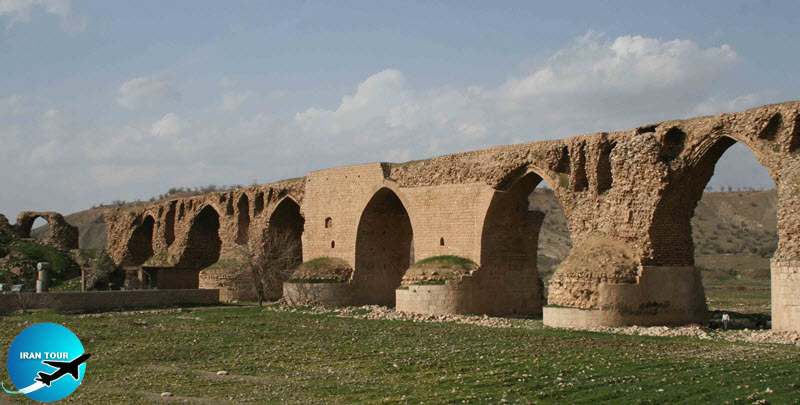 |
A stone mass is located
These kinds of constructions were used to irrigate the surrounding areas of Persepolis and prevented the danger of overflowing waters. They also connected the royal road of Pasargad and Persepolis to Susa and Sardis. Nothing has remained from the Parthian era. However, it seems that, without bridges, it was impossible to make new roads, especially the Silk Road, which began from China and continued through Kashghar, Samarqand, Marv, Balkh, and northern Iran. and ended in Asia Minor and Rome. It is probable that archaeologists will find out about such bridges in the future.
The remnants of Sasanian architecture speak of the glorious history of that period, and the characteristics of that architecture made the construction of bridges imperative. A major factor was the existence of large rivers in the western parts of Iran, especially in Khuzestan. Another was the adoption of Ctesiphon and Estakhr as capitals, which were connected by a wide royal road. Although many of the Sasanian bridges were destroyed, some extant remnants show the importance of road-making and bridge construction such as Pol-e Pirin and Pol-e Khayrabad in Fars, Pol-e Sassani in Darreh-Shahr, Pol-e Dokhtar in Mamoolan, and Pol-e Kashkan, 50 km away from Khorramabad.
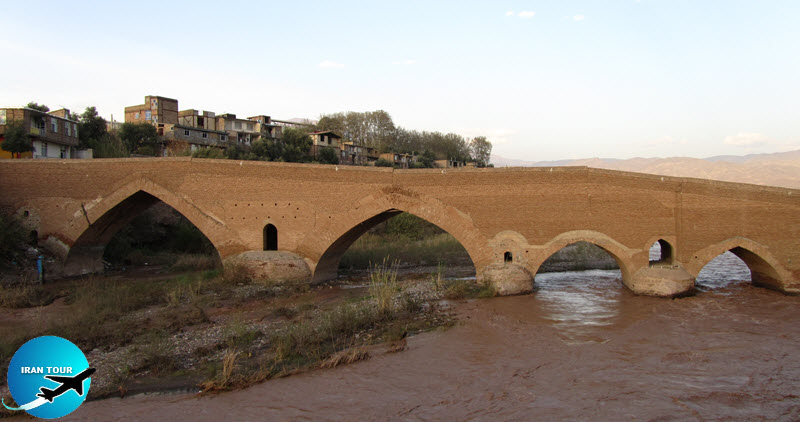 |
Several combinations of bridges and dams exist in Khuzestan. Some 300 km west of Bar Mizan, there are remnants of a bridge-dam known as Band-e Qaysar or Shadorvan bridge Different opinions prevail about the initial construction of this bridge-dam, which was the one in the Sasanian period. Some believe that it was originally built during the reign of Shapur I, Zol-aktaf. Having defeated Valerian, the Roman Caesar, in 260 BC, he had the captured soldiers construct the bridge. Others ascribe the bridge-dam of Shadorvan to him. Now, a question arises as to whether all these bridges are Sasanian or Islamic bridges constructed on Sasanian piers. So, dating the Sasanian bridges needs the most attention. The differences in the piers and arches of the Sasanian bridges, such as their mortar, show which of the bridges, erroneously named Sasanian, are in fact Islamic ones constructed on Sasanian piers, and which are Islamic ones with Sasanian designs.
Bridge-building in the Islamic Period
These differences are more clearly seen in Pol-e Dokhtar, northwest of Andimeshk, which is believed to have been constructed by one of the Sasanian kings, Shapur I. The piers were constructed so as to directly support a wooden apron. Later, in the Islamic period, some arches made of rough stones were built from which some parts remain. In the first two centuries of Islam, bridge-building declined and bridges were only built now and then by the efforts of some local rulers. Owing to its engagement in military, political and cultural affairs, the government paid no attention to making bridges and preferred to use the ones built in previous times.
There is no authentic document about the first bridges built in the Islamic era. Hamdollah Mostowfi believed that the first Islamic bridges were built on the Aras river by Bekr ebne 'Abdollah. Lestrange, in his Historical Geography of the Eastern Caliphate, refers to the Pole Sangi, thrown across the Tab river near Arjan, and ascribes it to Daylami, the private physician of Hojjaj ebn-e Yusof Saqafi.
In the 4th century AH, two Shi`ite sects ruled in Iran. One of them was the Buyids, governing in Hamadan, Rey, Esfahan, Iraq, and Khorassan; the other was the Kurdish Hosnaviyeh, ruling over Lorestan and Kordestan. Owing to their ample attention to the prosperity of their territory, the Daylamites not only restored most of the ruined bridges, but also succeeded in building huge bridges and dams. Considering only the bridges of Amir and Tilakan from the viewpoint of architecture and bridge-building, the Daylamite era was one of the most important periods. Abu al-Najm Badr ibn-e Hosnaviyeh was one of the Kurdish Hosnaviyeh who devoted his efforts to building numerous bridges, two of which are Pol-e Dokhtar and Pol-e Kalhor, surviving in Lorestan province.
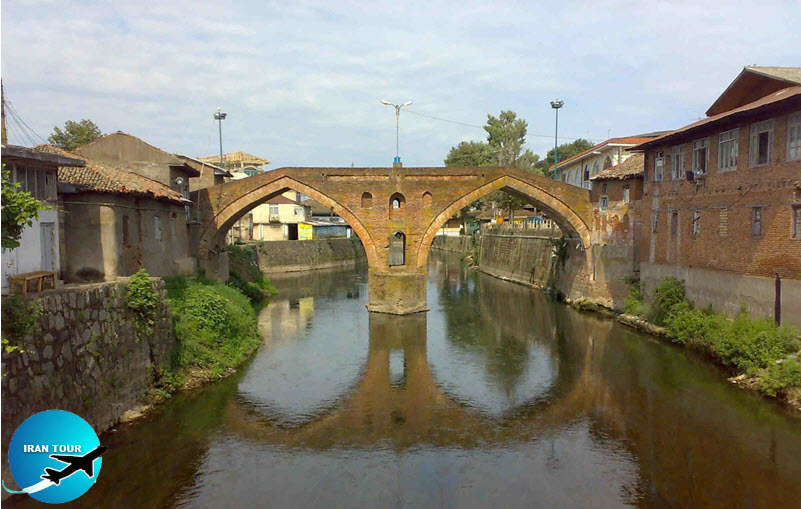 |
Bridge-building in Ghaznavid and Seljuq Periods
There are still some bridges and dams dating back to the Ghaznavid period. The most renowned of them is Pol-e Toos, built across Kashafrood river, on the road from Toos to Herat and Balkh. Another bridge that has antecedents in the Ghaznavid period is the one constructed across the river of Ghazneh by the Ghaznavid monarch Soltan Mahmood in 422 AH.
According to some reliable documents, bridge-building was very important in the Seljuq period. Ebn-e Balkhi believed the Seljuq emirs devoted great efforts to the construction and restoration of bridges. One of them was Atabeg Jalal-ed-Din Chavoli, who was appointed as the governor of Fars province by the Seljuq monarch Soltan Mohammad. He built the Gessar bridge dam after it fell into ruin after several years.
Referring to several districts of Herat in his book, Hafez-e Abru speaks of the huge Herat bridge built by Soltan Sanjar in 505 AH. One of the most impressive bridges from the Seljuq period is the Zia'-ol-Molk bridge, the remnants of whose piers are seen on the Aras river, 20 km away from Nakhjavan. It was built by Zia’-ol-Molk Nakhjavan, the minister of the Seljuq period.
One of the restored bridges of the Seljuq period is Pol-e Shahrestan, whose
Bridge-building in the Il-Khanid Period
Owing to the peacefulness of the country in the Il-Khanid period, making bridges and dams recovered its former splendor. One of the most renowned bridges dating back to the Seljuq period is a handsome strong bridge thrown over the Andar-Ab river of Attar by Ali-Shah Jaylani, Ghazan-Khan's minister. Another is Pol-e Baba-Mahmood, one of the most famous bridges over Zayandehrood, which is located 3 Km south of Firoozan, one of the villages of Falavarjan. It was constructed by Mohammad ebn-e Moahmood Ashtarjani, famo Faraj-od-Din, Oljaitu's secretary, and Abu-Sa'id Bahador-Khan, the commisic congregational mosque of Ashtarjan.
According to a partly damaged inscription deciphered by H. Schindler, Pol-e Dokhtar was built over Qezel-Owzan river in Mianeh in 888 AH and restored by Musseli in 983 AH.
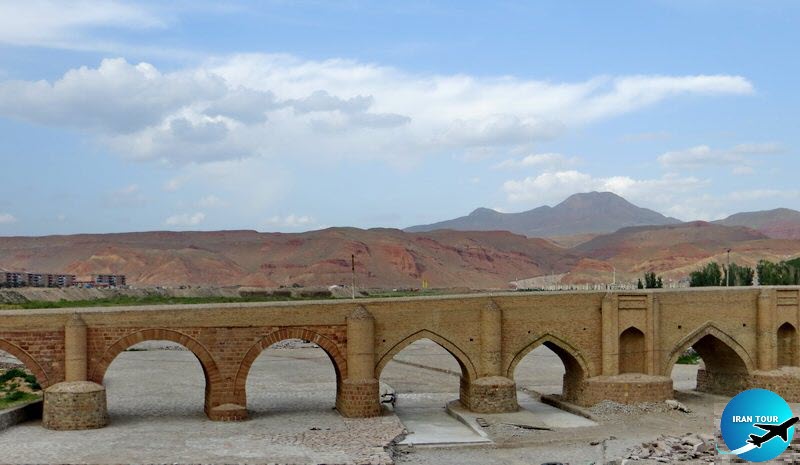 |
Bridge-building in the Safavid Period
When the Safavid monarch Shah Esma'il came into power, he subdued the rebels, and
Although making roads and bridges were ordered by the central government, local rulers were responsible for their construction. A glance at the roads linking Esfahan to other provinces shows that making roads, bridges and caravansaries were brought to a peak under the Safavids. Most of the bridges in Iran have their origins in the Safavid period.
Pol-e Siahkooh and Pol-e Sefidab were constructed by Shah `Abbas on the road from Kashan to Mazandaran and Farahabad. Pol-e Dallak and Pol-e Konargerd linked Tehran with Qom. The road from Esfahan to Qazvin was a cobblestone-paved carriage road that crossed Pol-e Dodehak, Pole Yekcheshme-ye Sorkhdeh, and Pol-e Mohammadabad-e Kharreh.
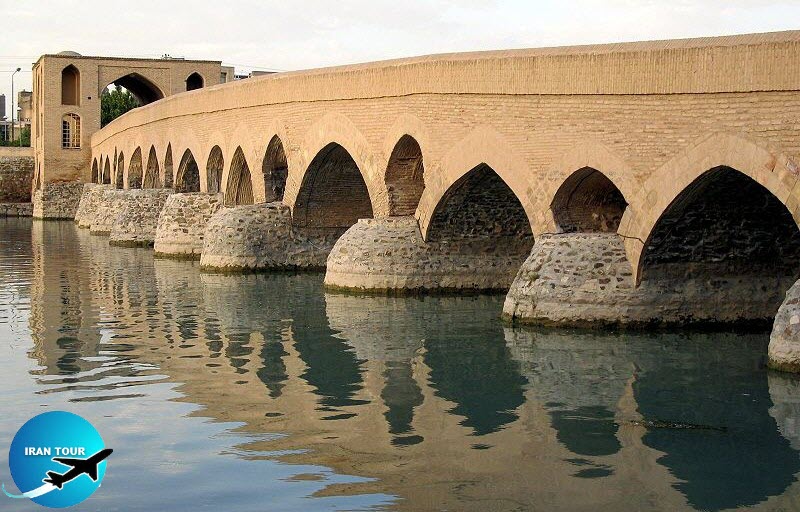 |
The construction of a caravan route from Esfahan to Bandar- Abbas began in 1620 but was not completed until 1672, when Shah 'Abbas succeeded in expelling the Portuguese from Hormoz Island and occupying their naval fortifications. The importance of Hormoz Island as a port gradually declined during these years and Bandar-Abbas became the most significant
Some 50 km west of Bandar-'Abbas, there is a ruined bridge whose remnants are still remarkable. It was built on a caravan road crossing an alluvial area, 20 km away from the mouth of Kool river, Nearly 800 meters in length, it is the longest bridge in Iran. Constructed in two parts, its western part was at least 420 meters long, 6 meters high, and 6.80 meters wide. Its piers were 5.85 meters wide.
Built of cut and rough stones, Pol-e Rood-e Kool is one of the most splendid bridges in ancient Iran. On the road from Qazvin to Hamadan, Kermanshah and Sar-e Pol-e Zahab, several bridges were constructed, the most important of which are Pol-e Farasfaj, Pol-e Shckasteh, Pol-e Bistoon, Pol-e Kohne-ye Kermanshah, Pol-e Mahidasht, etc.
Safavid monarchs were always interested in the lush provinces of Mazandaran and Gilan. Shah 'Abbas devoted efforts to making roads linking Esfahan to
Bridge-building in the Afsharid and Zand Periods Owing to the king's conquests and the sinking of the country into civil chaos, the Afsharid monarchs did not pay much attention to making bridges and roads. Relative peacefulness in the Zand period encouraged the Zand monarchs and rulers to build magnificent bridges some of which are Pol-e Roodkhane-ye
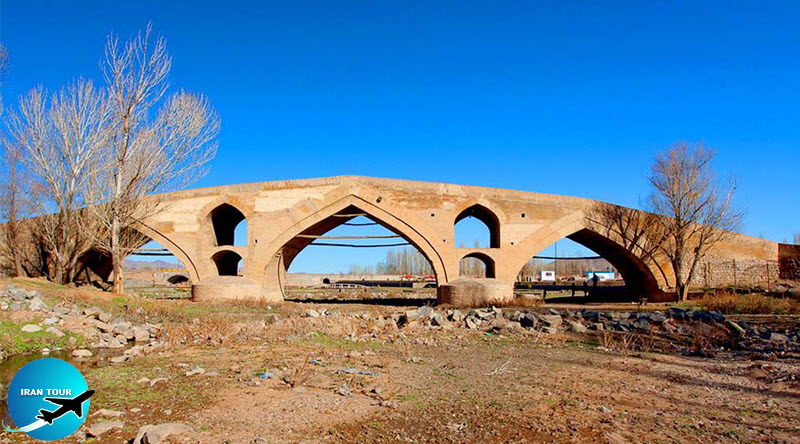 |
Another road linking Tehran to Mazandaran was the old Haraz road. According to Mohammad Hassan-Khan E'temad-od-Dowle five thousand cubits of bridges were built along only 48 kilometers of this road. The road from Tehran to Qom was built upon the order of Ali-AsgharKhan Atabak in 1883. Pol-e Asgar-Abad and Pol-e Howz-e Soltan are among the important bridges constructed on this road. Some of the bridges located in the cities or on caravan routes were built by local rulers and charitable people. These included Pol-e Asef-od-Dowleh on the road from Karaj to Eshtehard, Pol-e Looshan built by Nasser-Khan Gorji, Pol-e Mirza-AgaKhan Noori in Noor, Pol-e Mohammad-Hassan-Khan in Babol, three bridges in Zanjan, and Pol-e Khan Zenyan and Pol-e Dalaki, built by Moshir-ol-Molk in Shiraz.
Bridge-building in Recent Centuries
The bridges built in recent centuries follow the new architectural methods. They are
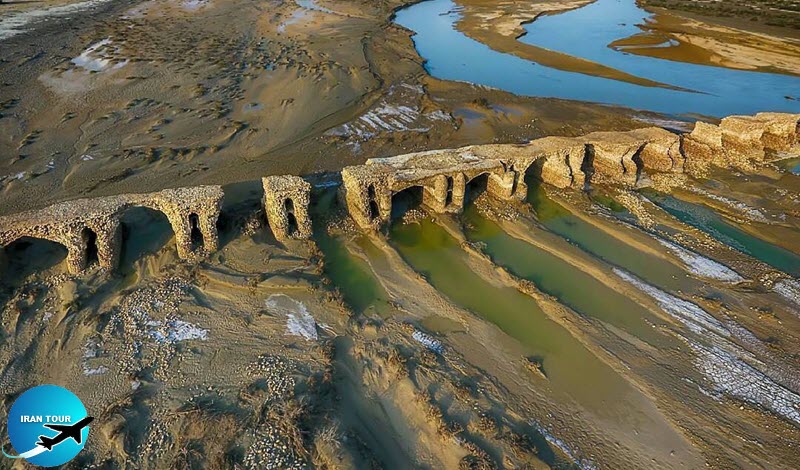 |
- Details
- Category: IRAN Blog